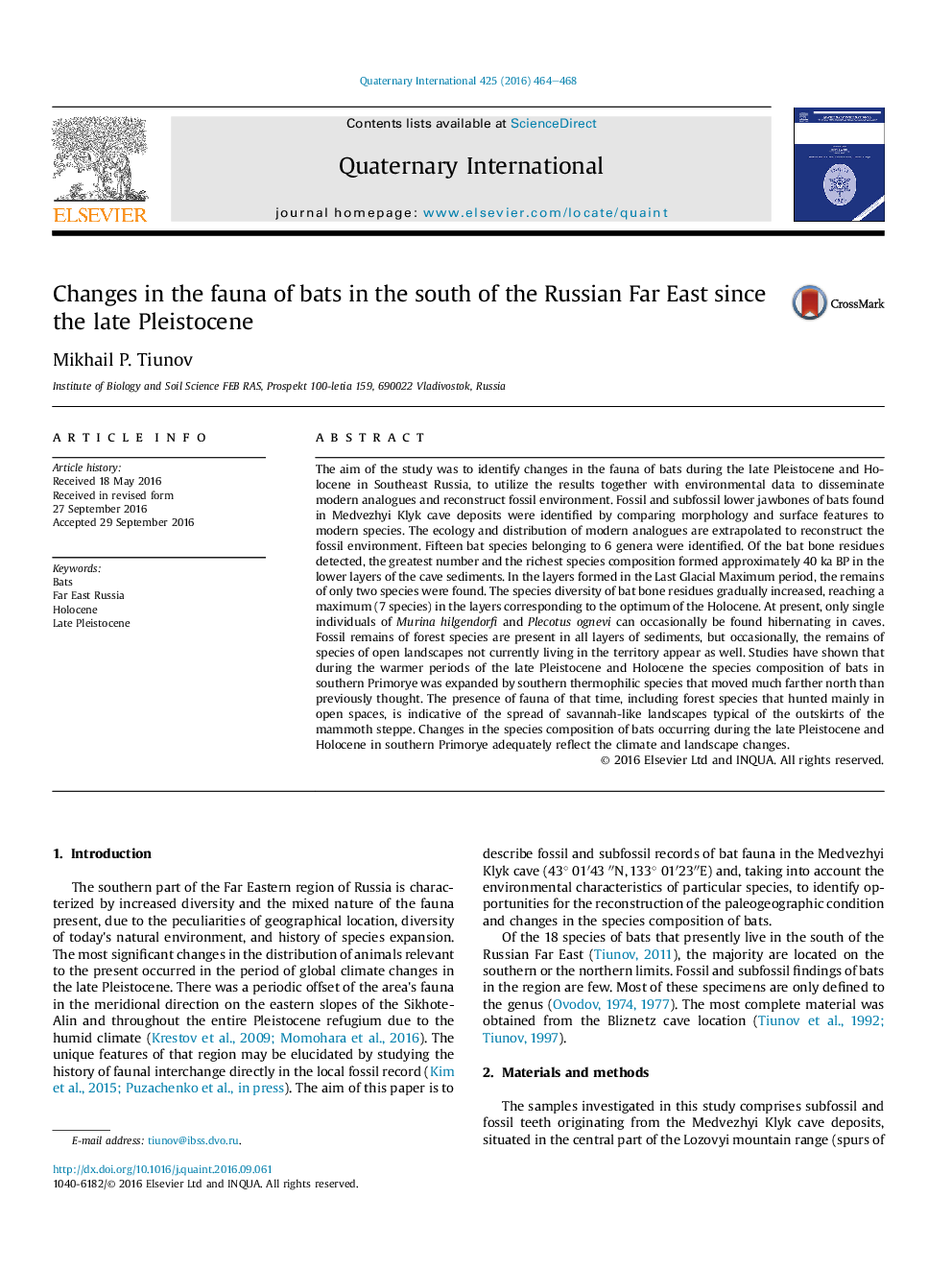| کد مقاله | کد نشریه | سال انتشار | مقاله انگلیسی | نسخه تمام متن |
|---|---|---|---|---|
| 5114030 | 1484082 | 2016 | 5 صفحه PDF | دانلود رایگان |
عنوان انگلیسی مقاله ISI
Changes in the fauna of bats in the south of the Russian Far East since the late Pleistocene
ترجمه فارسی عنوان
تغییرات جانورانی از خفاش ها در جنوب شرق روسیه پس از اواخر پلیستوکن
دانلود مقاله + سفارش ترجمه
دانلود مقاله ISI انگلیسی
رایگان برای ایرانیان
کلمات کلیدی
خفاش ها، شرق دور روسیه، هولوسن، پالیستوسن بعدا،
موضوعات مرتبط
مهندسی و علوم پایه
علوم زمین و سیارات
زمین شناسی
چکیده انگلیسی
The aim of the study was to identify changes in the fauna of bats during the late Pleistocene and Holocene in Southeast Russia, to utilize the results together with environmental data to disseminate modern analogues and reconstruct fossil environment. Fossil and subfossil lower jawbones of bats found in Medvezhyi Klyk cave deposits were identified by comparing morphology and surface features to modern species. The ecology and distribution of modern analogues are extrapolated to reconstruct the fossil environment. Fifteen bat species belonging to 6 genera were identified. Of the bat bone residues detected, the greatest number and the richest species composition formed approximately 40 ka BP in the lower layers of the cave sediments. In the layers formed in the Last Glacial Maximum period, the remains of only two species were found. The species diversity of bat bone residues gradually increased, reaching a maximum (7 species) in the layers corresponding to the optimum of the Holocene. At present, only single individuals of Murina hilgendorfi and Plecotus ognevi can occasionally be found hibernating in caves. Fossil remains of forest species are present in all layers of sediments, but occasionally, the remains of species of open landscapes not currently living in the territory appear as well. Studies have shown that during the warmer periods of the late Pleistocene and Holocene the species composition of bats in southern Primorye was expanded by southern thermophilic species that moved much farther north than previously thought. The presence of fauna of that time, including forest species that hunted mainly in open spaces, is indicative of the spread of savannah-like landscapes typical of the outskirts of the mammoth steppe. Changes in the species composition of bats occurring during the late Pleistocene and Holocene in southern Primorye adequately reflect the climate and landscape changes.
ناشر
Database: Elsevier - ScienceDirect (ساینس دایرکت)
Journal: Quaternary International - Volume 425, 15 December 2016, Pages 464-468
Journal: Quaternary International - Volume 425, 15 December 2016, Pages 464-468
نویسندگان
Mikhail P. Tiunov,
